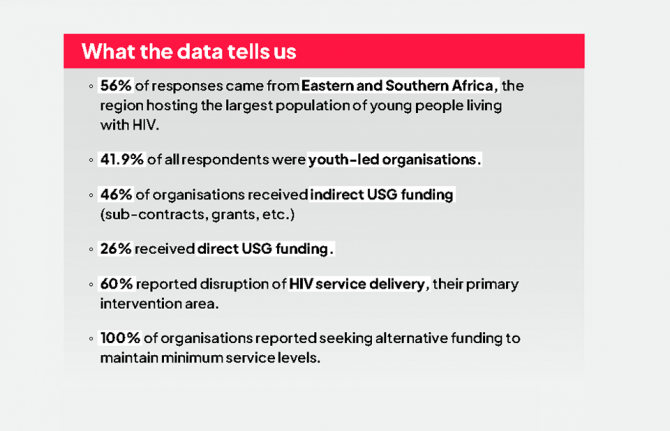

Feature Story
Vancouver delegates call for greater innovation in HIV diagnostics
22 July 2015
22 July 2015 22 July 2015Innovation in HIV diagnostics is urgently needed if the world hopes to achieve the 90–90–90 target for access to antiretroviral therapy, leading scientific experts advised this week. The call for intensified effort and innovation on HIV diagnostics occurred during two sessions at the 8th International AIDS Society Conference on HIV Pathogenesis, Treatment and Prevention, held in Vancouver, Canada.
“It is clear that we can’t accept business as usual when it comes to HIV diagnostics,” said UNAIDS Deputy Executive Director Luiz Loures, who moderated a special satellite session on enhancing diagnostic access. “We must do things differently if we are to reach the 90–90–90 target.”
Global experts focused on three key diagnostic challenges: ensuring timely diagnosis of HIV among children, rapidly increasing knowledge of HIV status among adults living with HIV and scaling up essential viral load testing. These three focus areas are key priorities for the Diagnostics Access Initiative, a multi-stakeholder global initiative that aims to fully leverage the potential of laboratory medicine to lay the groundwork to end the AIDS epidemic as a public health threat.
Diagnosing children living with HIV
Unlike adults, who can be diagnosed with HIV through a simple antibody test, very young children require more expensive molecular tests, which use centralized laboratories that are remote from clinical sites. This creates substantial delays in diagnosing HIV-exposed children and also increases both costs and the risks that specimens or results will be lost. Even when early infant diagnostic services are available, many HIV-exposed children only receive their HIV test results after the time when peak mortality occurs, at six to eight weeks old, according to Trevor Peter, of the Clinton Health Access Initiative (CHAI).
Relatively simple, point-of-care diagnostic tests for early infant diagnosis are now emerging, Mr Peter reported, and these will need to be rapidly scaled up. In addition, mobile health technologies have the potential to reduce delays in the communication of test results and help ensure that test results for HIV-exposed children are actually received at the clinical site. At the Vancouver conference, UNAIDS and its partners in the Diagnostics Access Initiative announced with Roche Diagnostics a 35% decline in the global price for early infant diagnostic testing.
Ensuring 90% knowledge of HIV status among adolescents and adults living with HIV
UNAIDS sponsored a separate session at the conference on democratizing HIV testing to reach the 90–90–90 target. Joseph Amon of Human Rights Watch advised that all people should feel empowered to choose where, when and how they want to be tested for HIV. Consistent with this human rights approach, there is growing interest in HIV self-testing tools.
New international guidelines on HIV testing services, launched by the World Health Organization (WHO) in Vancouver this week, indicate that WHO envisages widespread access to self-testing as an important component of a comprehensive HIV testing effort. Several countries in different regions currently allow HIV self-testing, but most countries have yet to adapt their laws and regulatory frameworks to permit it.
The new WHO guidelines on HIV self-testing emphasize the importance of moving testing access closer to communities. In particular, the new guidelines recommend steps to enable lay workers to administer HIV tests. Results from the Sustainable East Africa Research for Community Health (SEARCH) trial in more than 30 rural communities in Kenya and Uganda indicate that population-level knowledge of HIV status approaching or exceeding 90% can be achieved through community-owned, multidisease testing campaigns.
Presenting modelling work, John Stover of Avenir Health said that 90% knowledge of HIV status is achievable more broadly through a strategic combination of testing strategies, such as provider-initiated testing in diverse health settings, outreach to key populations, fixed centres for HIV testing and counselling, and various community-based approaches, such as HIV self-testing, mobile testing and door-to-door, home-based efforts.
Ensuring universal access to viral load testing
Conference participants also heard urgent calls to expand access to viral load testing. Not only is access to viral load testing essential for monitoring the 90-90-90 target, but viral load testing is an essential clinical tool to detect early treatment failure and permit intervention to improve treatment adherence. However, projections by CHAI indicate that current trends in the uptake of viral load testing are insufficient to ensure achievement of the 90–90–90 target.
During the diagnostics-focused sessions, several ways forward were suggested to close the viral load testing gap. Partners in the Diagnostics Access Initiative, along with the Government of South Africa, last year concluded an agreement with Roche Diagnostics to reduce the price of viral load testing by 40% worldwide. In addition, steps need to be taken to maximize the effective use of the viral load platforms that presently exist, as many viral load technologies are severely under-utilized at present.
Related
 “Who will protect our young people?”
“Who will protect our young people?”

02 June 2025


